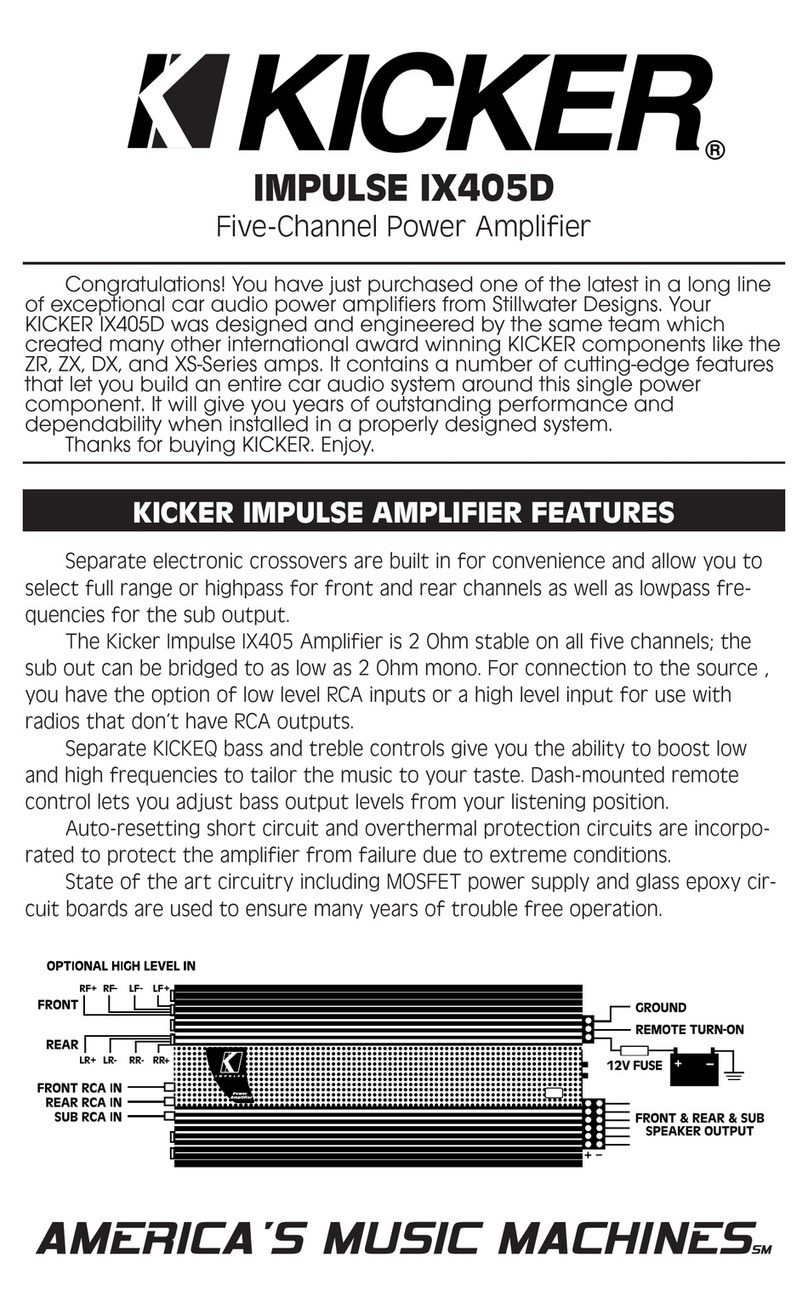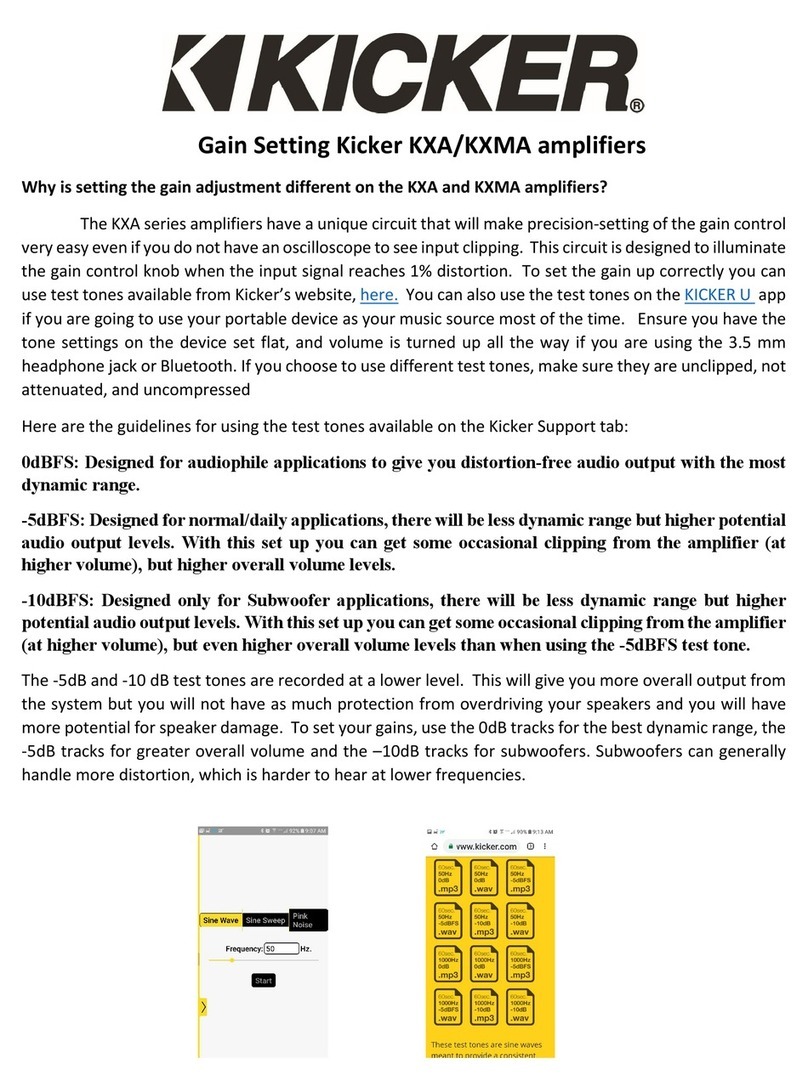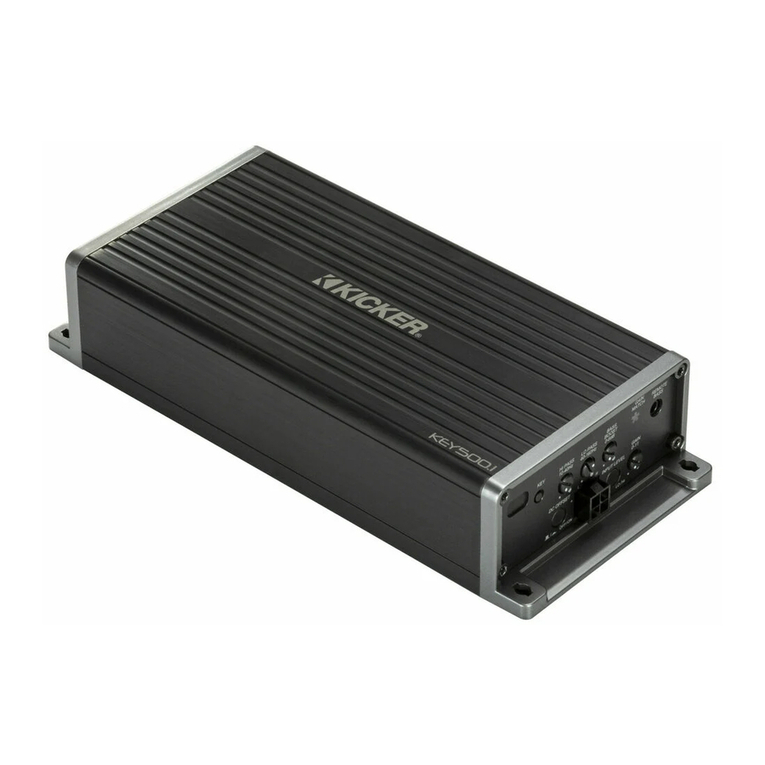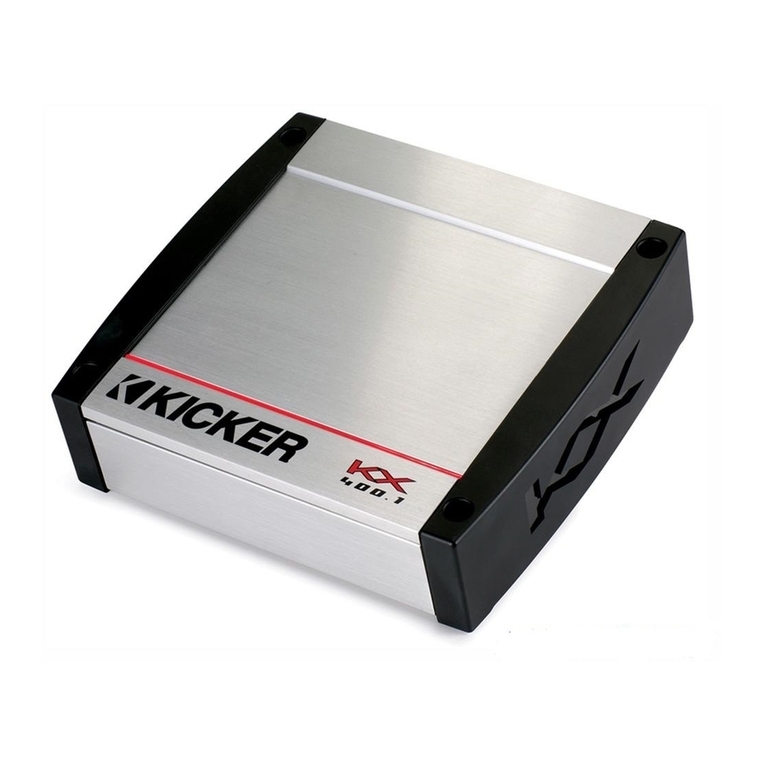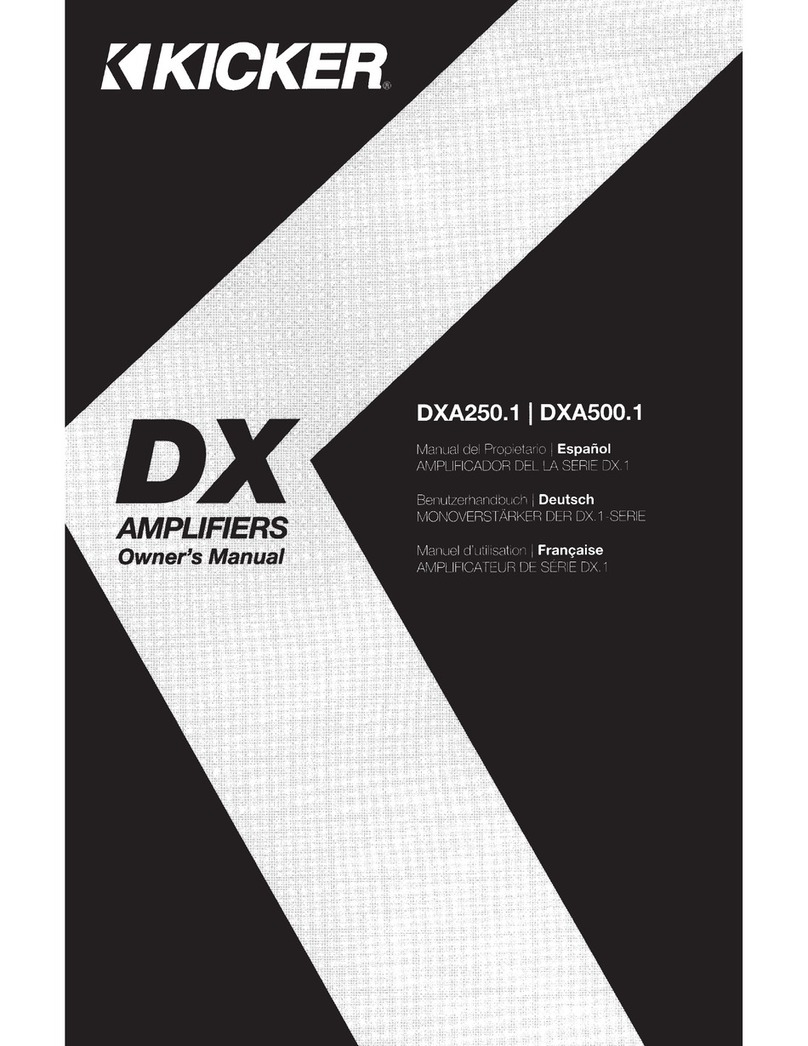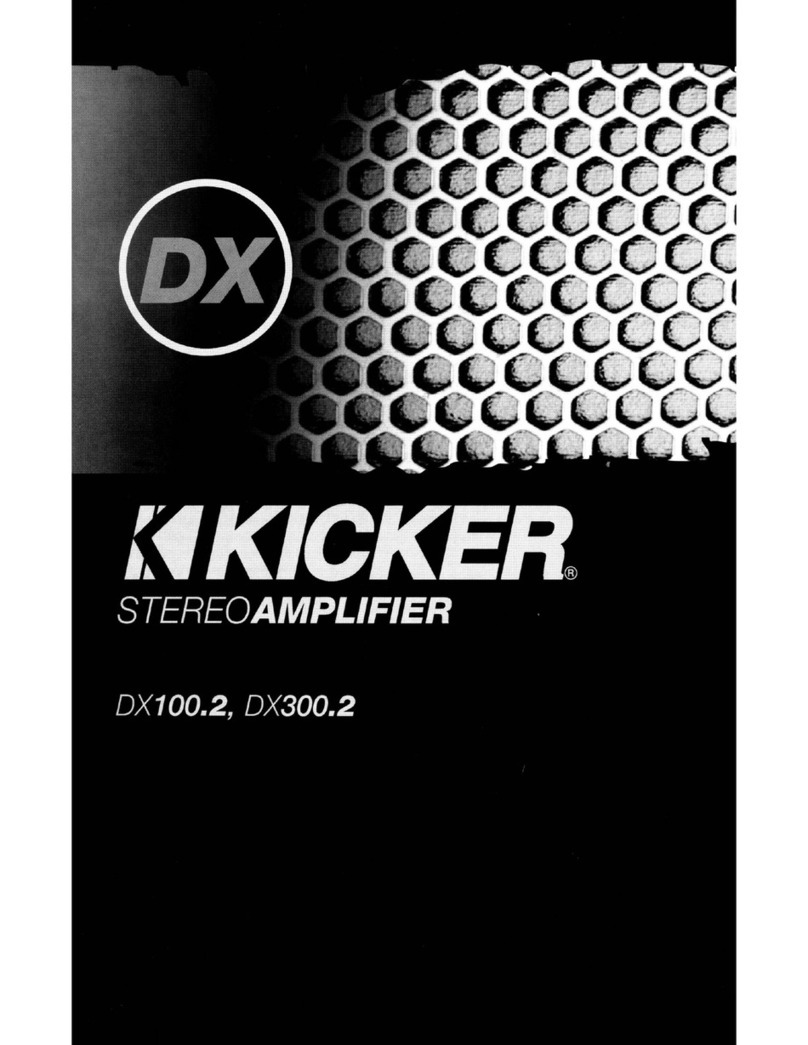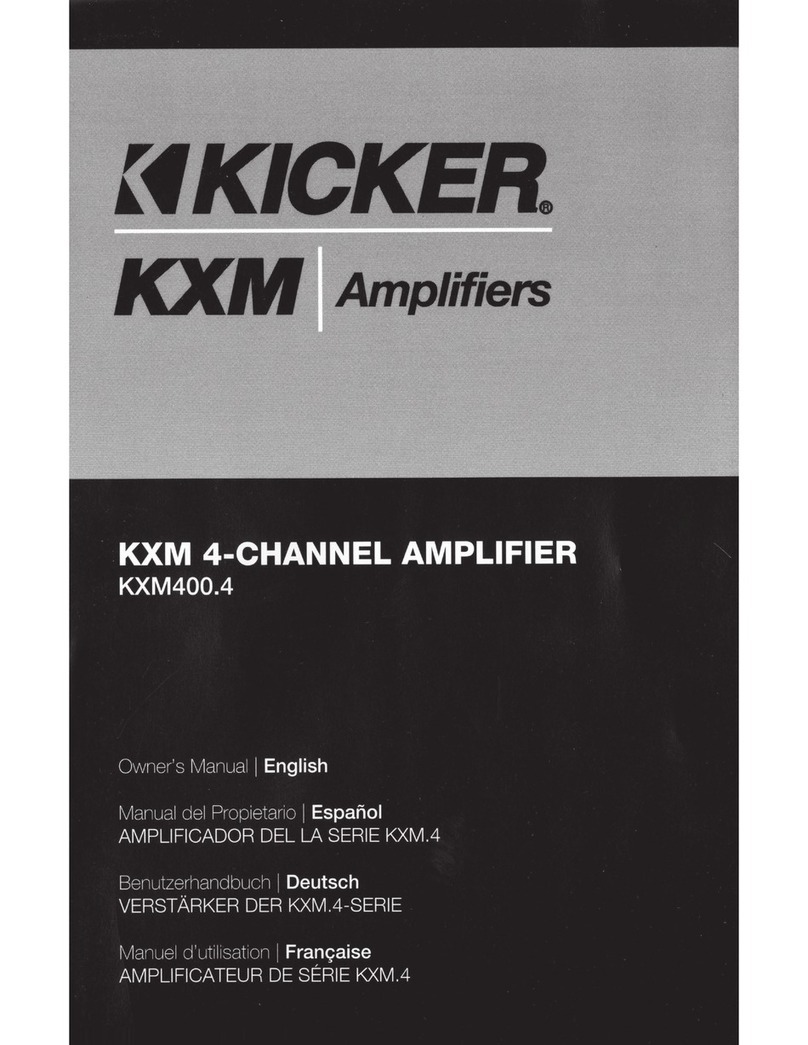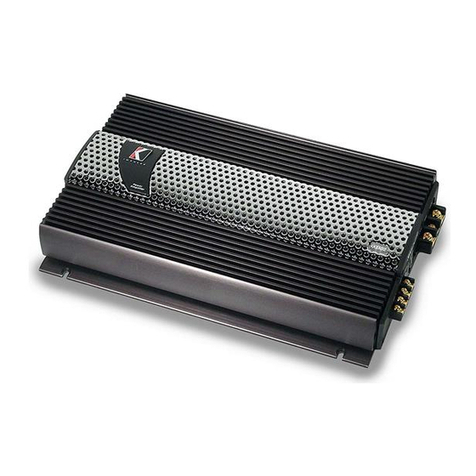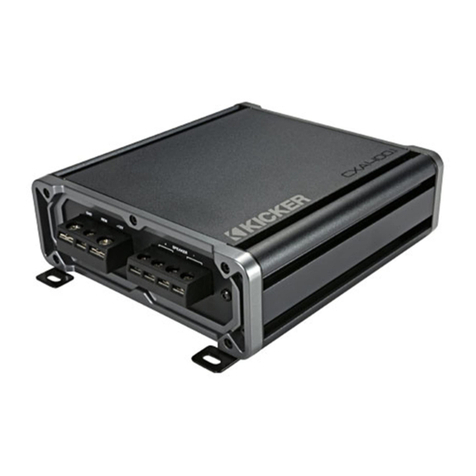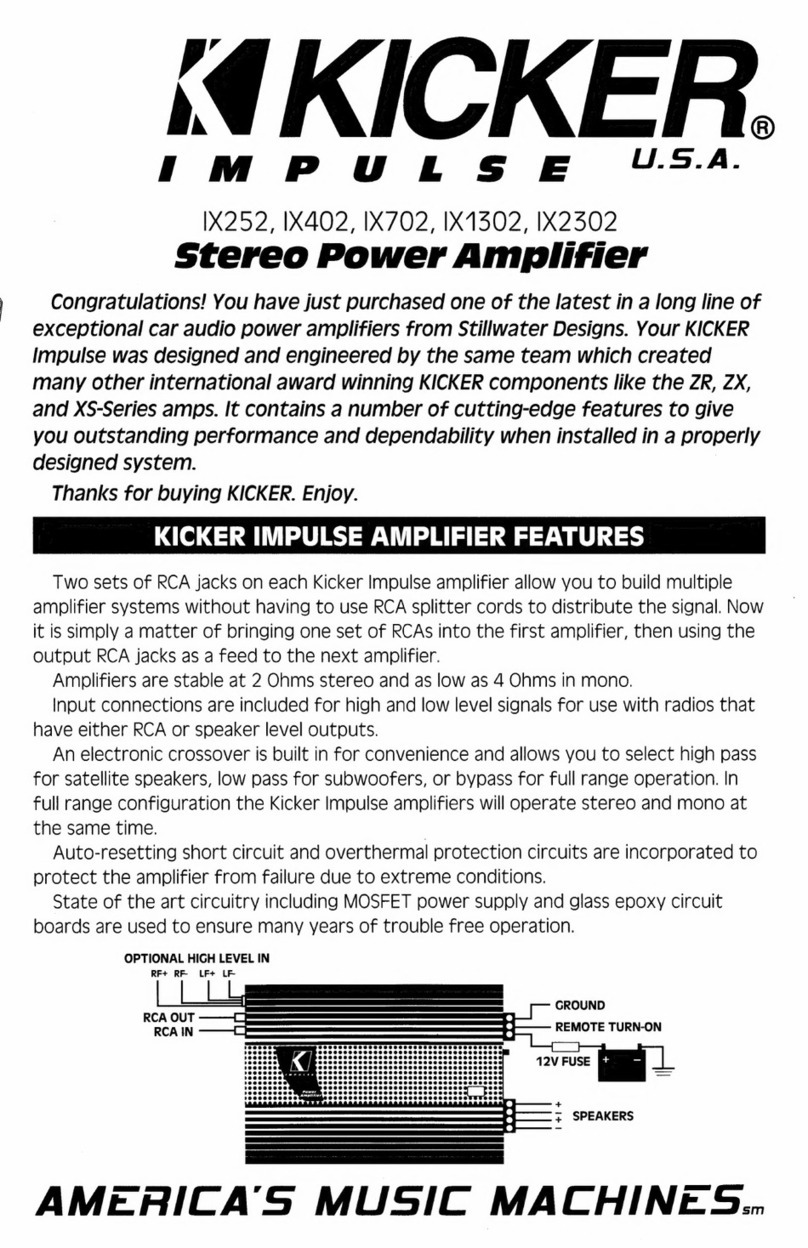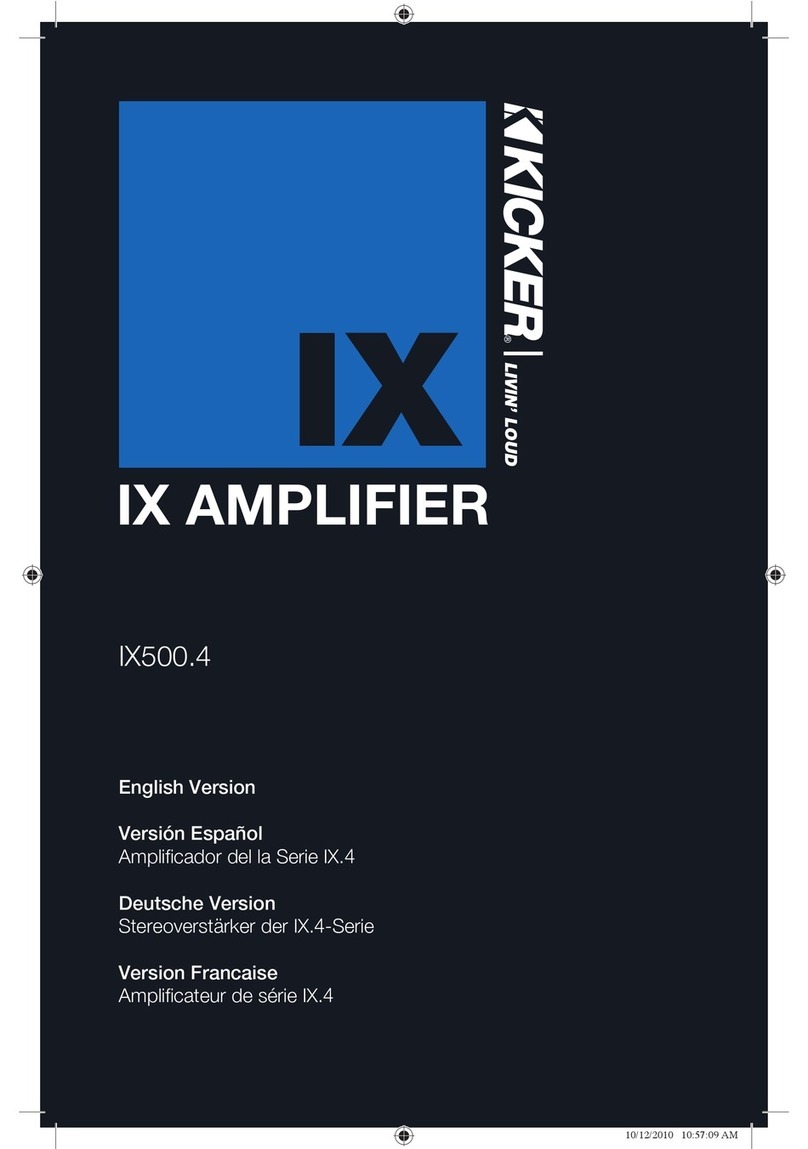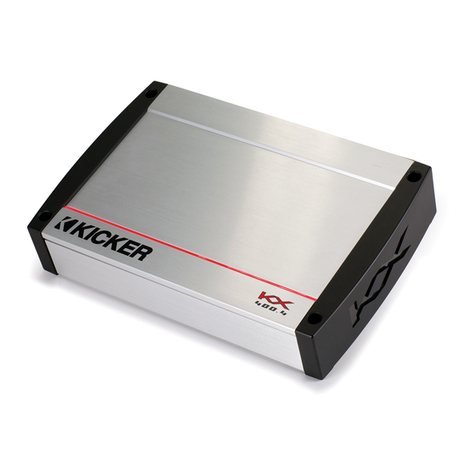6IX AMPLIFIERS
TROUBLESHOOTING
If your amplifier does not appear to be working, check the obvious things first such as blown fuses, poor or
incorrect wiring connections, incorrect setting of crossover switch and gain controls, etc. There is an illuminated
blue badge on top of the amplifier denoting the power state of the amp in addition to the Protection LED on the
end panel of your KICKER IX series amplifier. When the blue badge is lit, this indicates the amplifier is turned on
and the amplifier is functioning properly.
BLUE Badge Light off, no output? With a Volt Ohm Meter (VOM) check the following: +12 volt power
terminal (should read +12V to +16V) Remote turn-on terminal (should read +12V to +16V) Check for
reversed power and ground connections. Ground terminal, for proper conductivity. Check for blown fuses.
BLUE Badge Light on, no output? Check the following: RCA connections Test speaker outputs with a
“known” good speaker. Substitute source unit with a “known” good source unit. Check for a signal in the
RCA cable feeding the amplifier with the VOM meter set to measure “AC” voltage.
Protection LED flashing with loud music? The red LED indicates low battery voltage. Check all the
connections in your vehicle’s charging system. It may be necessary to replace or charge your vehicle’s battery or
replace your vehicle’s alternator.
Protection LED on, no output? Amplifier is very hot = thermal protection is engaged. Test for proper
impedance at the speaker terminals with a VOM meter (see the diagrams in this manual for minimum
recommended impedance and multiple speaker wiring suggestions). Also check for adequate airflow around
the amplifier. Amplifier shuts down only while vehicle is running = voltage protection circuitry is engaged.
Voltage to the amplifier is not within the 10–16 volt operating range. Have the vehicle’s charging and electrical
system inspected. Amplifier will only play at low volume levels = short circuit protection is engaged. Check
for speaker wires shorted to each other or to the vehicle chassis. Check for damaged speakers or speaker(s)
operating below the minimum recommended impedance.
No or low output? Check the balance control on source unit Check the RCA (or speaker input) and
speaker output connections.
Alternator noise-whining sound with engine’s RPM? Check for damaged RCA (or speaker input) cable
Check the routing of RCA (or speaker input) cable Check the source unit for proper grounding Check
the gain settings and turn them down if they are set too high.
Reduced bass response? Reverse a speaker connection from positive to negative on the stereo/subwoofer
channel(s); if the bass improves, the speaker was out of phase.
Ground Noise? KICKER amplifiers are engineered to be fully compatible with all manufacturers’ head units.
Some head units may require additional grounding to prevent noise from entering the audio signal. If you are
experiencing this problem with your head unit, in most cases running a ground wire from the RCA outputs on the
head unit to the chassis will remedy this issue.
Please Note: Modern high performance speakers have a lower DC Resistance than what used to be available.
The KICKER Coaxial and Component speakers are rated at four ohms (some DC Resistances may be as low
as 3 ohms) and work with any amplifier designed to operate at a four ohm load. If you want to use two KICKER
Coaxial or Component speakers on a single channel of your amplifier, wire the speakers in series. This will
improve the sound quality, lower the total harmonic distortion and lessen the thermal load at the amplifier. This
may prevent an amplifier from shutting down due to over-current protection circuitry.
CAUTION: When jump starting the vehicle, be sure that connections made with jumper cables are correct.
Improper connections can result in blown amplifier fuses as well as the failure of other critical systems in the
vehicle.
If you have more questions about the installation or operation of your new KICKER product, see the Authorized
KICKER Dealer where you made your purchase. For more advice on installation, click on the SUPPORT tab on
the KICKER homepage, www.kicker.com. Choose the TECHNICAL SUPPORT tab, choose the subject you are
interested in, and then download or view the corresponding information. Please E-mail support@kicker.com or
call Technical Services (405) 624-8583 for unanswered or specific questions.
2010 IX 500.1 1000.1 RevC.indd 62010 IX 500.1 1000.1 RevC.indd 6 11/12/2009 2:15:08 PM11/12/2009 2:15:08 PM
